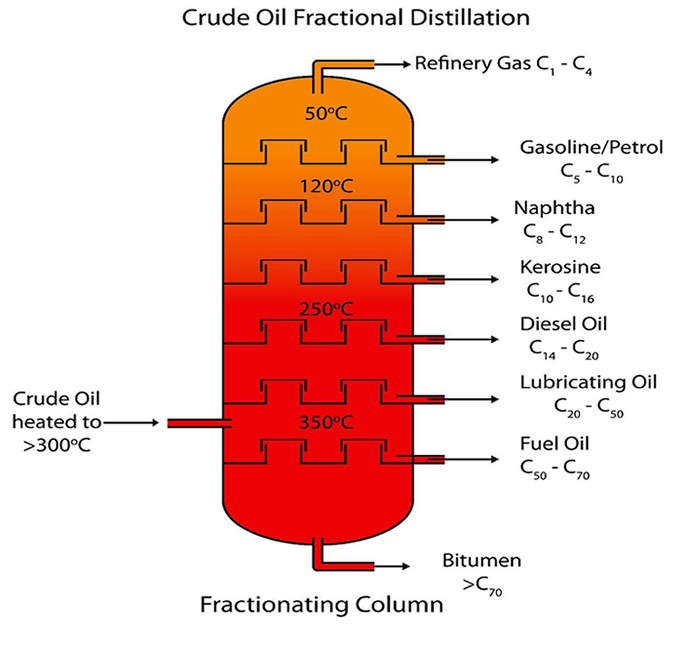Nitration is an undesirable condition that indicates that the oil in natural gas-fueled engines is becoming saturated with the soluble and or insoluble oxide compounds.
The reaction of nitrogen with the base oil forms two kinds of nitrogen compounds: organic nitrates and nitro compounds. They are independent of the oxy-products that lead to oil oxidation, which is another form of oil degradation.
Organic nitrates
As oil is thrown onto the cylinder walls and wiped down, these compounds are washed into crankcase where they play a major role in forming sludge and varnish.
When an excess level is reached, they drop out to form light amber to maroon deposits around the rocker arm and valve assembly, and into piston skirts. Deposits can cause oil rings to stick, increase oil consumption and shorten filter life.
Nitro compounds
This can result from several conditions: piston blow-by caused by stuck, worn or broken compression rings; scored or worn out-of-round liners; or exhaust gas leaking into the oil because of high valve guide wear or poor valve seating. Other causes include leaking turbocharged seals; critical engine ignition and combustion patterns; or excessive service length of the oil.
A higher-than-expected concentration of nitro compounds means that there are unreacted nitrogen oxide gases in the oil. They will thicken the oil abnormally and cause premature dropout of varnish and sludge, evidenced by reddish piston skirt varnish and sludge in the lower compression ring grooves and oil ring.
Cause of nitration
This is a correlation between the rate of nitration of a gas engine oil and a combination of operating conditions, such as air/fuel ratio, engine load, and oil temperature.
Degradation Patterns
Four-cycle gas engines: Organic nitrates decompose rapidly at temperatures above 149ºC. They are the main cause of oil deterioration in low-speed (below 700 rpm), four-cycle gas engines because cylinder wall temperatures usually are below 160ºC, even in ebullient-cooled units. Where cylinder wall temperatures exceed 160ºC, the higher temperatures promote oil oxidation.
Two-cycle gas engines: Oxidation is the main cause of deterioration with separate power cylinder lubrication systems. Nitrated products are scavenged out of the exhaust ports and thereby prevented from contaminating the crankcase charge. The presence of even moderate nitration in these units is a strong indication that excessive oil feed to the cylinders is being scraped down the crankcase.
Detection
Visual inspection that identifies deposits can signal a nitration issue. Oil nitration can also be diagnosed by its effects on engine performance, including stuck oil control rings, excessive oil consumption and short filter life.
Detecting nitration before it leads to visible deposits or reduced engine performance is a good way to increase the efficiency of gas-fueled engines and ensure they last for as long as possible.
This can be achieved through regular used oil laboratory analysis with an infrared (IR) scan, which can detect chemical changes such as nitration, as well as the nature and concentration of lubrication contaminants.
Skilled interpretation of comprehensive used oil analysis data can help to pinpoint the underlying maintenance problems or operating conditions behind oil degradation.
A comprehensive used oil analysis program that includes tests for nitration and oxidation can be useful in early detection and diagnosis of oil nitration and underlying causes before sludge and varnishing adversely affects engine performance.
Mobil Serv℠ Lubricant Analysis is designed to help save time and money, while boosting equipment reliability and productivity.
Troubleshooting
According to laboratory testing and field-sample analyses, gas engine oils become unfit for service when the concentration of organic nitrate approaches 5 per cent. This level of organic nitrates can also accelerate oil oxidation, leading to worsening problems with sludge and varnishes. Keeping the air-fuel ratio outside the range of 0.5 to 4.5 per cent can limit nitration of oil.
Maintaining an oil temperature of over 65.5ºC can also limit this chemical process, with even better results for oil temperatures over 71ºC.
Reducing engine loads and balancing cylinders can also keep oil nitration under control. Increasing load from 75 to 105 per cent of rated load can significantly speed up nitration.



